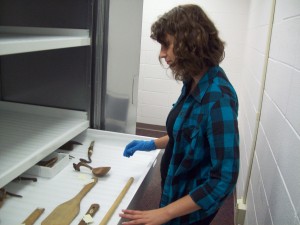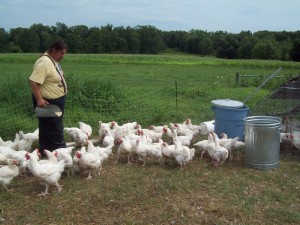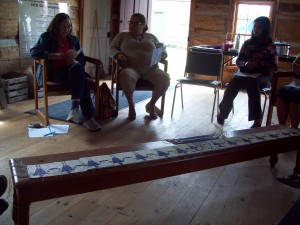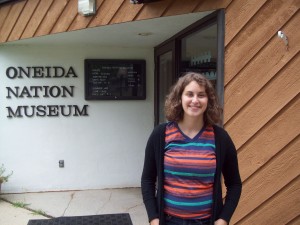For the last couple of weeks, I have been thinking about what makes this TLAM practicum different from other parts of my education so far. So much of my library and archives education seems like checking a box to fill out a resume –
- Learned Encoded Archival Description
- Learned basics of processing
- Learned X, Y, and Z software
- Learned reference interview etiquette
- Learned effective time management (really, who am I kidding?)

And these are completely necessary skills that I am glad I have experience with. But sometimes it seems like there is so much out there, how will I ever learn each little detail that will put me above another student sending out hundreds of job applications? After two weeks working in Oneida, this anxiety is gone (okay, somewhat diminished), replaced by the thousand things I learned from working at the museum, thinking up projects, talking to coworkers, and visiting other cultural institutions in the community. When I’m learning something, it takes a while to sink in. Rita Lara, the director of the museum, said something similar about training employees. Thoughts need to be revisited, assumptions reexamined, and the task needs to be repeated, before you really have a handle on something. I’d like to share some of my favorite learning experiences from the last week.
Tsyunhehkw^ Organic Farm
One of my favorite side trips after lunch at Joe’s Texas Barbeque (thank you Shawn and Myriah!), was the Oneida Organic Farm Tsyunhehkw^. This is one of the best examples of learning something by being exposed to the idea multiple times, hearing the values behind it, and then seeing it in practice. We had read about the importance of white corn and the three sisters (white corn, bean, and squash) before heading to Oneida. We then heard about the three sisters from Myriah and Jake on museum tours, and learned the importance to Oneida culture. But actually seeing the corn beans and squash sustaining each other and hearing about the growing process really reinforced what we had already heard.

We met Ted Skenandore, who gave us a tour and told us what Tsyunhehkw^ does for the community. I loved hearing about all the different projects the farm has. They keep two kinds of chickens for eggs and meat, cattle, and all sorts of vegetables including fields of white corn. They offer starter kits for people starting their own garden, plus community garden plots for those who might not have gardens of their own. The farm is certified organic and the cattle are grass-fed.
Metoxen – Tribal Historian

Another great opportunity at Oneida was to meet with the Tribal Historian, Loretta Metoxen. This spring, I met her through working on a separate project for TLAM, the Oneida Film Preservation Project. She is an amazing woman with so much life experience and knowledge of tribal issues. Mary and I were able to attend a presentation on wampum belts last Tuesday afternoon. Loretta gave a talk on the history of wampum belts, which turned into a conversation with community members about many aspects of Iroquois history and the Wisconsin Oneida community. We learned more about wampum belts from Myriah and Jake, when they gave us tours of the museum. On another occasion this week, Mary and I talked to Loretta about her thoughts on the next Convening Culture Keepers meeting; the IMLS funded professional development institute at Ziibiwing in April 2014. We ran through possible topics to be covered at the institute, and Loretta rated some of her top priorities. In the process, she talked to us about the roles of different cultural institutions in Oneida. This time with Loretta was really important to understand how libraries, museums, and other branches of the cultural heritage department function in the Oneida community.
Last Thoughts/Thanks

I have absolutely loved working at the museum for the last two weeks. It was completely energizing to work on the photograph collection and collaborate and learn about exciting projects to promote the museum and Oneida history. I want to thank everyone at the museum for being so welcoming to me and Mary for the last two weeks, and for being so passionate and innovative in bringing what the museum has to offer to the community. This experience has made me want to work in museums and archives even more, and think of creative ways to interact with the community and share history.
-Lotus Norton-Wisla
